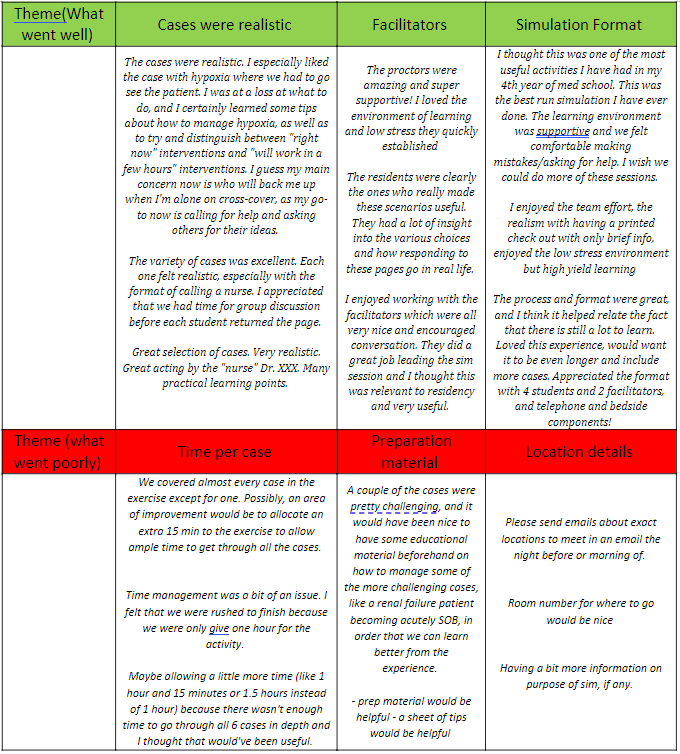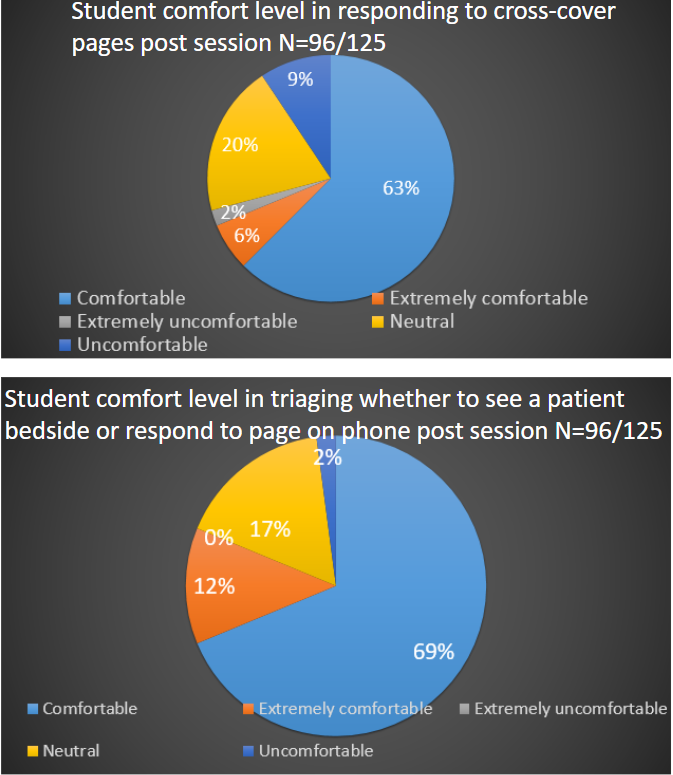Background: Feedback from last year’s Residency Essentials course identified cross-cover as a deficiency. We designed a simulation based cross-cover exercise for fourth-year medical students. The objective was to have students address common cross-cover scenarios and determine need to respond to a page in-person versus telephone.
Purpose: Interns are expected to cross-cover but lack formal training. Cross-cover requires gathering pertinent information quickly and making rapid clinical decisions and is prone to medical errors without adequate training. Program directors expect four core skills from new interns: recognizing sick from non-sick, asking for assistance, managing time wisely and communicating effectively with healthcare teams. Cross-cover tests these core skills simultaneously.
Description: One hundred and twenty fourth-year students were split into groups of four. Each received a written sign-out (in IPASS format) on six mock patients. They worked with two faculty, one acting as a nurse and another directly observing. Five cross-cover pages, one of which needed bedside evaluation whereas four could be resolved over phone, were presented sequentially. Students were expected to call the nurse while on speaker and determine further management. At completion of each page, faculty debriefed with the students. 80% of the students responded they had received no training for cross-cover prior to this. At completion, 62.5% of students felt comfortable in responding to cross cover pages and 66% felt comfortable in triaging whether to see a patient at bedside or resolve the issue on phone. More than 90% noted cases were relevant, realistic, and facilitators were knowledgeable and enthusiastic.
Conclusions: Simulation format provided practice in a low-risk environment. Students found problem-solving in groups and evaluating a crashing patient bedside valuable. Limitations include need for faculty manpower and smaller student sample size (120 instead of 160) due to COVID pandemic. This exercise can be adopted by other specialties and has potential to reduce medical errors.


